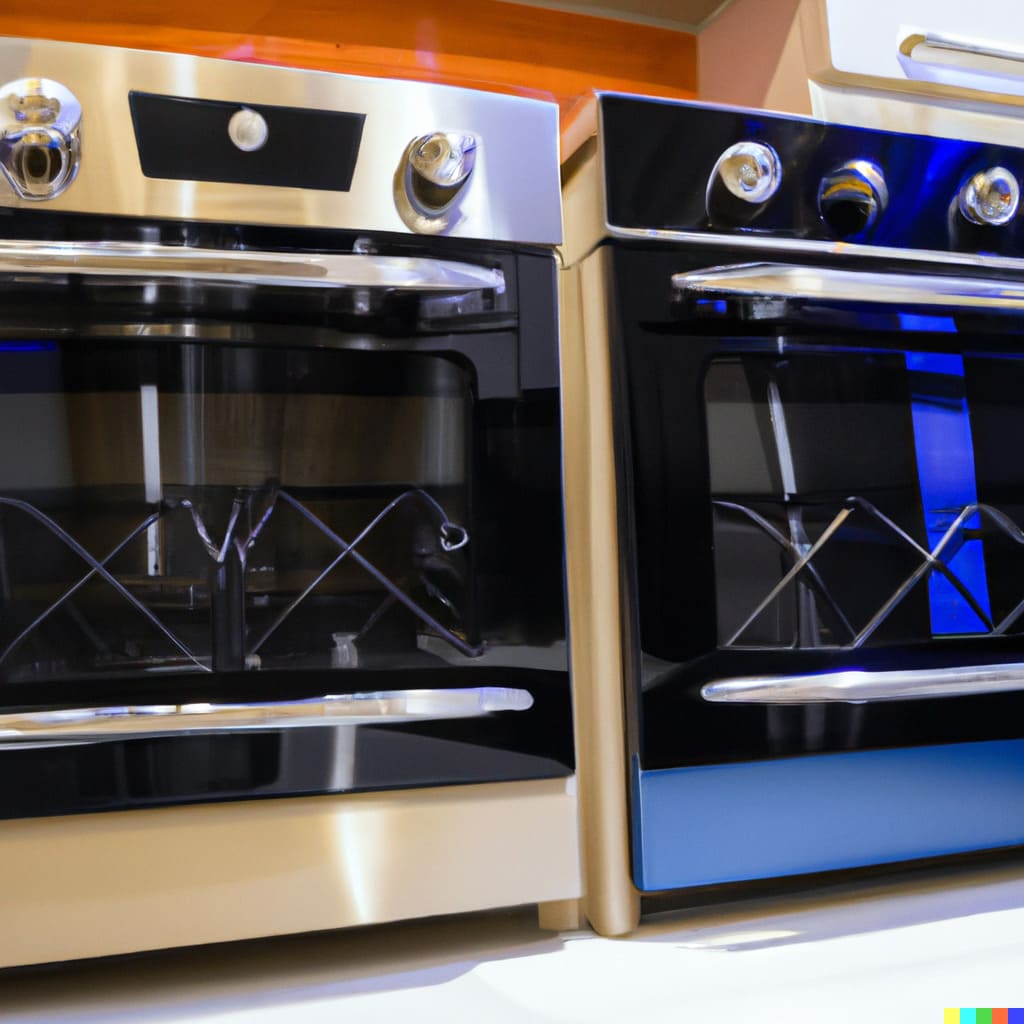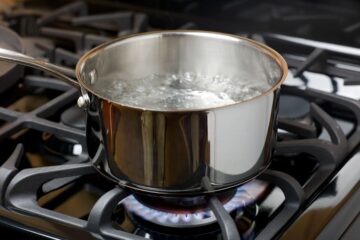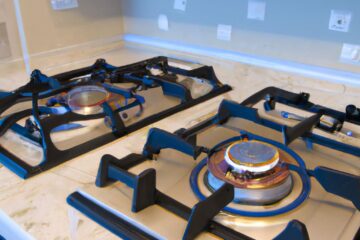If you’re a baker, you know the importance of having the right oven for your needs. Gas vs electric ovens for baking cakes is a question that many bakers face when deciding which type of oven to invest in. Both gas and electric ovens have their advantages and disadvantages for baking cakes, so it’s essential to know the difference between them to make the best decision for your baking needs.
This article will discuss the differences between gas and electric ovens for baking cakes. By comparing the two types of ovens, we aim to help you decide which is best suited for your baking needs. Whether you are a professional baker or a home cook, understanding the unique features of gas and electric ovens will help you choose the right oven for your cake-baking endeavors. So, let’s dive in and compare the two!
Gas Vs Electric Ovens For Baking Cakes
When it comes to baking cakes, choosing between a gas or electric oven can be a tricky decision. Both have their advantages and disadvantages, which ultimately come down to personal preference and specific needs. Now, we will explore the differences between gas and electric ovens in baking cakes so that you can make an informed decision.
Advantages of Baking in a Gas Oven.
Consistent Heat:
Gas ovens heat up quickly and evenly, making them ideal for baking. The heat is distributed evenly throughout the oven, ensuring that your baked goods are cooked evenly.
Temperature Control:
These ovens offer better temperature control than electric ovens, which can make a big difference when baking. With a gas oven, you can easily adjust the temperature to the exact degree you need, which is essential for delicate baking items like cakes and pastries.
Faster Preheating:
They preheat faster than electric ovens, so you can start baking sooner. This can be a significant advantage when you’re in a hurry or have a lot of items to bake.
Affordable:
Gas ovens are generally more affordable than electric ovens, which can be a significant advantage for those on a budget.
Energy Efficient:
They are more energy efficient than electric ovens, saving you money on your energy bills in the long run.
Disadvantages of Baking in a Gas Oven.
Requires a Gas Line:
Gas ovens require a gas line to operate, which can be a disadvantage for those who do not have a gas line in their home.
Risk of Gas Leaks:
They pose a risk of gas leaks, which can be dangerous if not addressed promptly. This is something to consider if you’re worried about the safety of your home.
Difficult to Clean:
Gas ovens can be more challenging to clean than electric ovens, which can disadvantage those who dislike cleaning.
Limited Features:
Gas ovens typically have fewer features than electric ovens, which can be a disadvantage for those who want advanced features like self-cleaning or convection baking.
Limited Warranty:
These Gas ovens typically have a shorter warranty than electric ovens, which can disadvantage those who want a more extended warranty for their oven.
Advantages of Baking in an Electric Oven.
Temperature Control:
Electric ovens have precise temperature control, which allows for more accurate and consistent baking. This is particularly useful for delicate baked goods such as pastries and cakes, which require precise temperature control to ensure they turn out correctly.
Even Heating:
They heat up evenly, which means that food is cooked evenly and consistently. This is especially important for baked goods, such as cookies and cakes, that require even cooking.
Convenience:
Electric ovens are generally easier to use than gas ovens. They have digital controls that allow you to set the temperature and cooking time by pushing a button. They also have self-cleaning features that make cleaning up after baking a breeze.
Safety:
These ovens don’t produce a flame, which makes them safer to use than gas ovens. This is particularly important for households with children or pets.
Disadvantages of Baking in an Electric Oven.
Longer Preheat Time:
Electric ovens take longer to preheat than gas ovens. This can be inconvenient if you’re in a hurry to start baking.
Higher Energy Costs:
They use more energy than gas ovens, which can result in higher energy costs.
Limited Features:
Electric ovens typically have fewer features than gas ovens. For example, they may not have a convection feature, allowing faster and more even baking.
Less Heat Flexibility:
Some bakers prefer the heat flexibility of gas ovens, as they can control the heat by adjusting the flame. Electric ovens need this capability, and the heat can be less intense.
Is Gas Or Electric Better For Baking?
Gas ovens provide better temperature control, which can be beneficial for baking. However, electric ovens can be more precise when regulating temperature, so it ultimately depends on the specific oven and the baker’s preferences.
Some chefs prefer gas ovens because they heat up faster and respond more quickly to temperature changes. In contrast, others prefer electric ovens because they allow for more precise temperature control and are often equipped with features like convection cooking.
Ultimately, the choice between a gas or electric oven for baking will depend on your personal preferences and the specific features of the oven you are considering.
Which Electric Oven Is Best For Baking?
Many electric ovens on the market are suitable for baking. The best one for you will depend on your specific needs and budget. Some features to look for in an electric oven for baking include:
-
Even heating
Look for an oven with a convection setting, which uses a fan to circulate hot air, ensuring that heat is distributed evenly throughout the oven.
-
Temperature control
Ensure the oven has accurate temperature control, so you can set the temperature to the exact degree you need for your recipe.
-
Size
Consider the oven size, and whether it will fit in your kitchen and accommodate the size of the dishes you’ll be baking.
-
Additional features
Some ovens come with additional features such as self-cleaning, delay start, and a built-in temperature probe. Some popular brands of electric ovens that are well-suited for baking include KitchenAid, GE, and Bosch.
How To Turn On A Gas Oven To Bake?
To turn on a gas oven to bake, ensure that the oven is correctly connected to a gas source and that the burners are clean and free of debris.
Next, locate the control knobs or buttons on the front of the oven and turn the knob or press the button for the bake function. This will typically be labeled as “bake” or have an icon of a pie or cake. Adjust the temperature to the desired setting using the separate temperature knob or button.
Once the temperature has been set, the oven will begin to heat up. It may take a few minutes for the oven to reach the desired temperature, so allow enough preheating before placing your food in the oven. Remember to use oven mitts or potholders when handling hot baking dishes and pans.
- What Is A Kitchen Range? Types, Sizes & Capacities
- Do Gas Ranges Have Built In Regulators? Get The Facts!
How To Bake In A Gas Oven?
Baking in a gas oven is similar to baking in an electric oven, but there are a few key differences. First, you will need to preheat the oven before baking. This is important because the temperature in a gas oven can fluctuate more than in an electric oven, and preheating helps to ensure that your food is cooked at the right temperature.
Once the oven is preheated, you can place your baking dish or tray on the middle rack of the oven. It’s essential to use a thermometer to ensure that the oven temperature is correct, as gas ovens can have hot spots or uneven heating.
You should also be aware that the door of a gas oven can cause drafts and affect the temperature inside the oven. Hence, it is best to minimize the time the door is open during baking. Additionally, you might need to rotate your baking tray halfway through the baking time to ensure even baking.
Finally, when the food is done, use an oven mitt or towel to remove it from the oven, as the dish or tray will be hot.
How To Use an Electric Oven For Baking?
Using an electric oven for baking is relatively straightforward:
- Preheat the oven to the desired temperature by setting the temperature control to the desired setting.
- Prepare your baking dish by greasing it or lining it with parchment paper.
- Place the dish in the oven and set the timer for the recommended baking time.
Be sure to keep an eye on your baked goods as they cook and remove them from the oven when they are golden brown or when a toothpick inserted into the center comes out clean. Use oven mitts or pot holders when removing the dish from the oven, as it will be very hot. Lastly, keeping the oven door closed while baking is essential to maintain a consistent temperature.
What Is Cheaper Gas Or Electric Oven?
Operating a gas oven is generally cheaper than an electric oven. Gas ovens are typically more energy efficient than electric ovens, meaning they use less energy to cook the same amount of food.
Additionally, the cost of natural gas is typically lower than that of electricity, reducing the overall cost of using a gas oven. However, the cost of using a gas oven can vary depending on the cost of natural gas in your area and how much you use your oven.
Also, converting from an electric to a gas oven may require additional costs for installing and upgrading the gas line. It’s best to check the cost of both options in your area and do the math based on your usage and budget.
How To Tell the Difference Between Gas And Electric Oven?
Gas ovens use gas as a fuel source and have a flame that can be seen in the oven. They are usually equipped with a pilot light and a thermocouple, ensuring the flame stays lit. On the other hand, electric ovens use electricity as a power source and have heating elements, such as coils or rods, hidden inside the oven. They are controlled by a thermostat and do not have a flame.
To determine if an oven is gas or electric, you can look for a flame, pilot light, or heating element inside the oven. Additionally, you can check the oven’s power source, which should be either a gas line or an electrical outlet.
Do Bakers Prefer Gas Or Electric Ovens?
Bakers may have preferences for either gas or electric ovens, depending on their specific needs and preferences. Gas ovens are often preferred for their ability to heat up quickly and maintain consistent temperatures, which can be beneficial for tasks such as baking bread. On the other hand, electric ovens may be preferred for their even heating and ability to control the temperature better. Ultimately, the choice between a gas or electric oven will depend on the specific needs and preferences of the baker.
Is A Gas Oven Good For Baking Cakes?
A gas oven can be used for baking cakes, but it may require adjustments to your recipe and baking technique. Gas ovens tend to have hot spots and can be less precise in temperature control than electric ovens, which can affect the baking time and consistency of your cakes.
It’s generally recommended to use an oven thermometer to ensure accurate temperature and to rotate your cake pans halfway through baking to ensure even baking. With some adjustments, a gas oven can produce delicious baked goods.
Which Type Of Oven Is Best For Baking Cakes?
A conventional oven is best for baking cakes. This type of oven has a heating element at the bottom and another at the top, allowing the heat to circulate evenly throughout the oven, resulting in a well-baked cake. Convection ovens, which use a fan to circulate the hot air, can also work well for baking cakes. Still, they may require slightly different temperature and timing adjustments.
Is It Better To Bake With Convection Or a Regular Oven?
It depends on the recipe and the type of food you’re preparing. Convection ovens, which have a fan that circulates the hot air, can cook food faster and more evenly than a regular oven. This can be especially helpful for baking cookies, pastries, and roasted vegetables.
However, convection ovens can also dry out some delicate baked goods like cakes, so it is essential to check the recipe or consult the manufacturer’s instructions for guidance. Furthermore, some recipes may need to be adjusted using a convection oven, as the cooking time and temperature may differ.
Should I Use Convection Bake Or Just Bake?
It depends on the recipe and the type of dish you are preparing. Convection bake uses a fan to circulate hot air, which can cook food more evenly and quickly. This can be beneficial for dishes that require a crispy crust or a uniform texture. However, some recipes may require a more gentle heat and may not benefit from the added airflow. If the recipe doesn’t specify, you can try both ways and see which one you prefer.
Do Cakes Bake Better In A Fan Oven?
A fan oven, also known as a convection oven, circulates hot air throughout the oven using a fan, which can help distribute heat more evenly. This can lead to more consistent baking and may reduce baking times. However, some cakes may benefit from a more traditional oven, as the circulating fan can cause cakes to rise unevenly or to brown too quickly on the outside. It is best to consult the recipe or the manufacturer’s instructions for the best baking method.
Overall Thoughts
Both gas and electric ovens can be used to bake cakes, but they have some differences that may affect the outcome.
Gas ovens tend to heat up more quickly and have a more even temperature distribution, which can result in a more evenly baked cake. Additionally, gas ovens often have a “broil” setting that can be used to brown the top of a cake.
On the other hand, electric ovens tend to have more precise temperature control, which can be helpful when baking delicate cakes. They also often have a convection setting which can help distribute heat evenly throughout the oven.
Overall, the type of oven you choose for baking cakes will depend on your preferences and the specific recipe you use.



